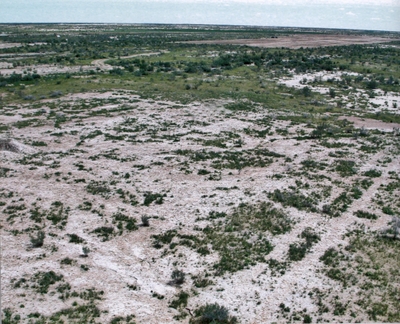The Archaeological Excavation
The first blow of the shovel was heard in AK9 towards the end of September 2001, during the first reconnaissance campaign in the oasis. A trench was dug which occupied part of room n.74, subsequently uncovering it. At the same time, some wall structures to the N and S were discovered and, against the N wall, we found a great heap of spherical clay projectiles.
In addition, we also found that Salvatori's trench was occupied by a family of Persian lynxes (Caracal caracal michaelis Heptner) that gave the impression of being rather touchy. We therefore decided to leave any further interventions to a later date and concentrated instead on the S area of the citadel, where a few remains of an artisan district and numerous bell-shaped wells filled with sand were found.
Work began again in September 2003 and we took advantage of a favourable climatic period which had stimulated a healthy plant growth, which is somewhat unusual for the Karakum. This particular condition showed quite clearly on the surface the principal outlines of the citadel, and in particular the edges and perimeter of a large square structure towards the north.
The surface was first sieved and several pottery samples were discovered, in addition to bronze seals, etched on both sides, numerous terracotta statuettes, both whole and in fragments; in addition, spindles, stone and faience beads, large bronze pins, pestles, fragments of small columns, flint spirals and blades, and so on. We chose to continue the excavation from the SW corner which rose from the takyr, because of its sterile nature and also because it could become a deposit for the excavated material which was then, as far as the upper layers were concerned, carefully sieved by two workers. The degraded upper layer was removed to a depth of from 5 to 20 cm, which brought to light the first part of the external defensive wall. From then on, excavations continued first towards the east, then to the SE, and finally from E to W.
(ibid., p. 64-67)
Source: Rossi Osmida, G.: Adji Kui Oasis. Vol.I: The Citadel of the Figurines.Venice: Il Punto Edizioni 2007.



